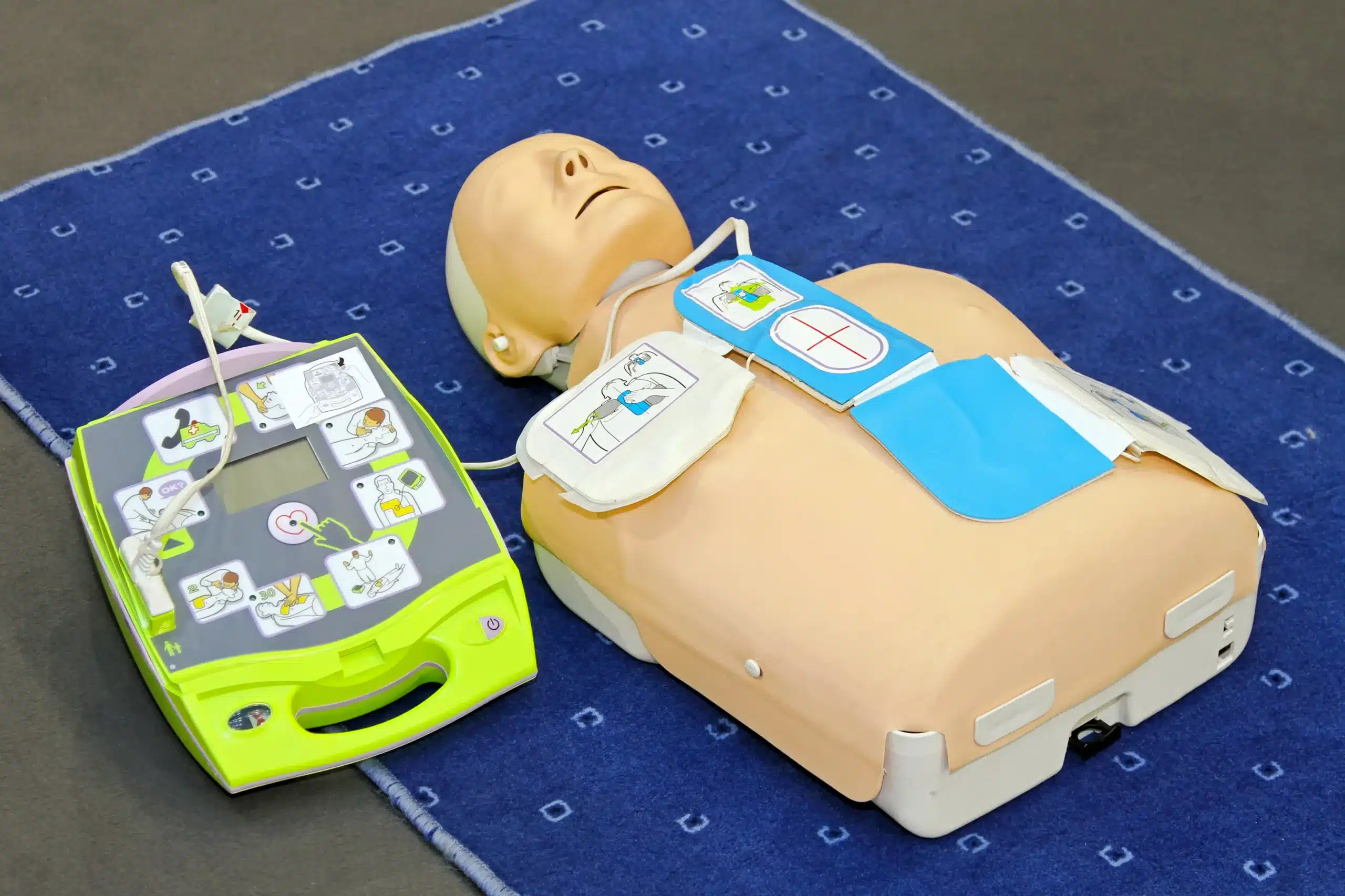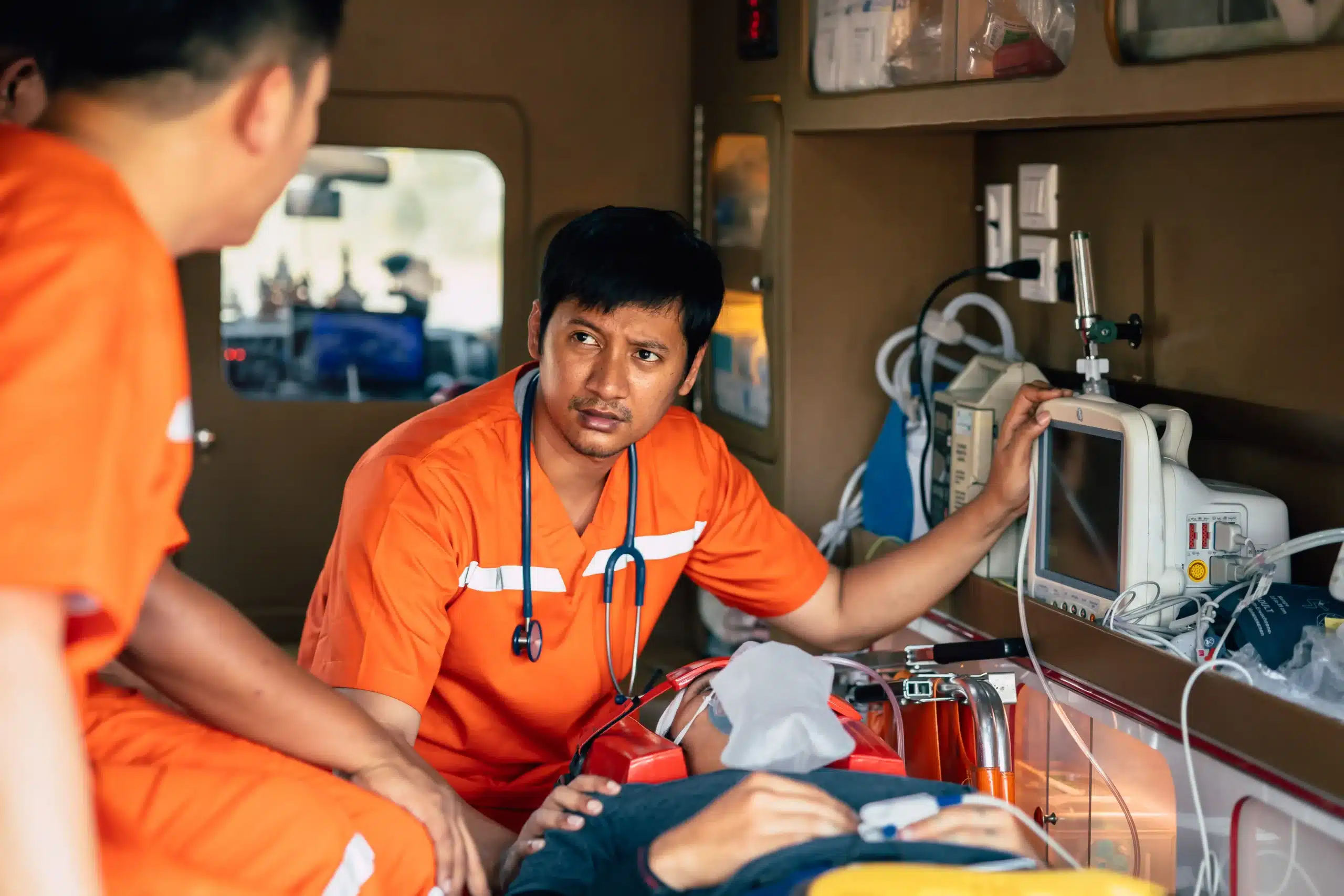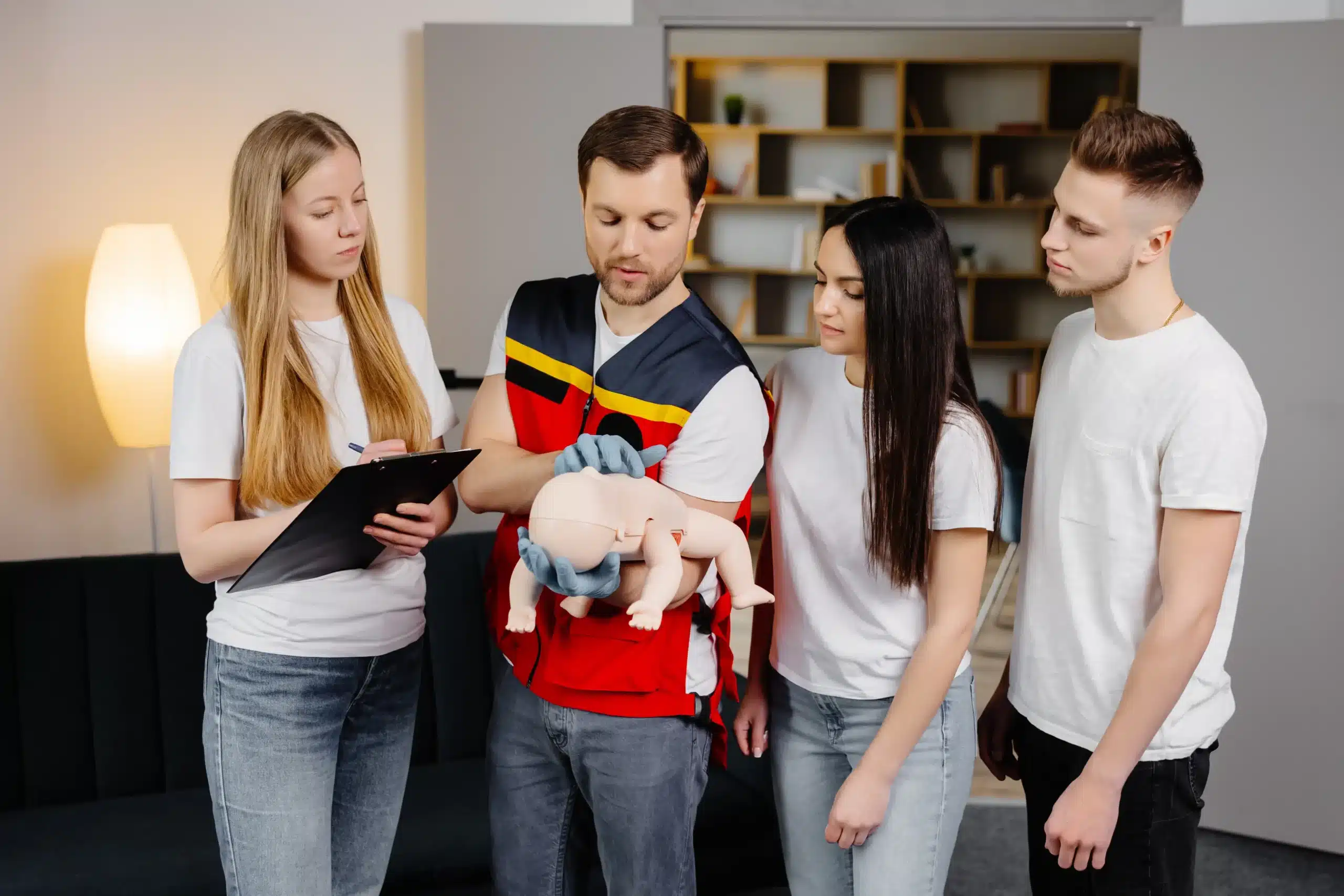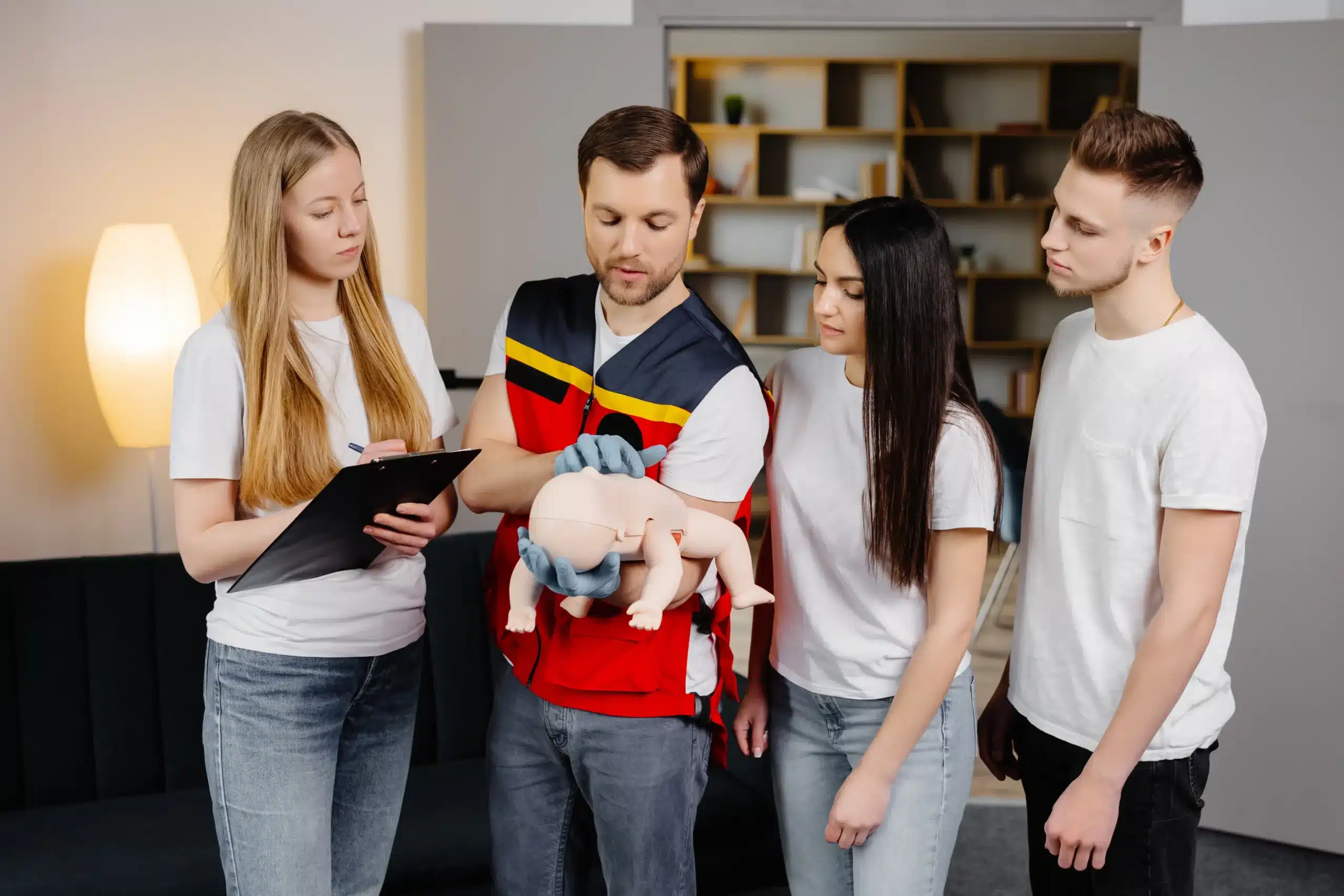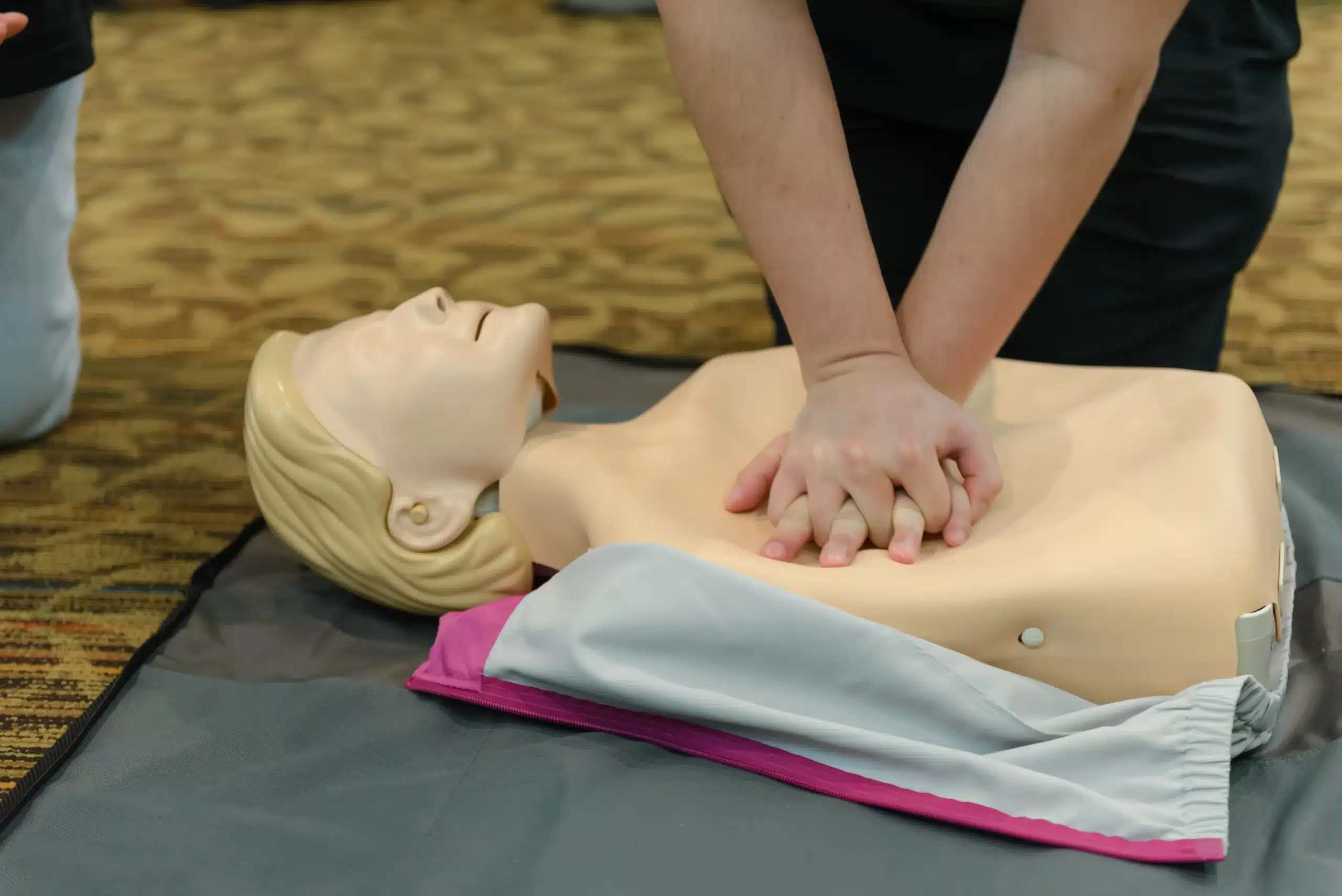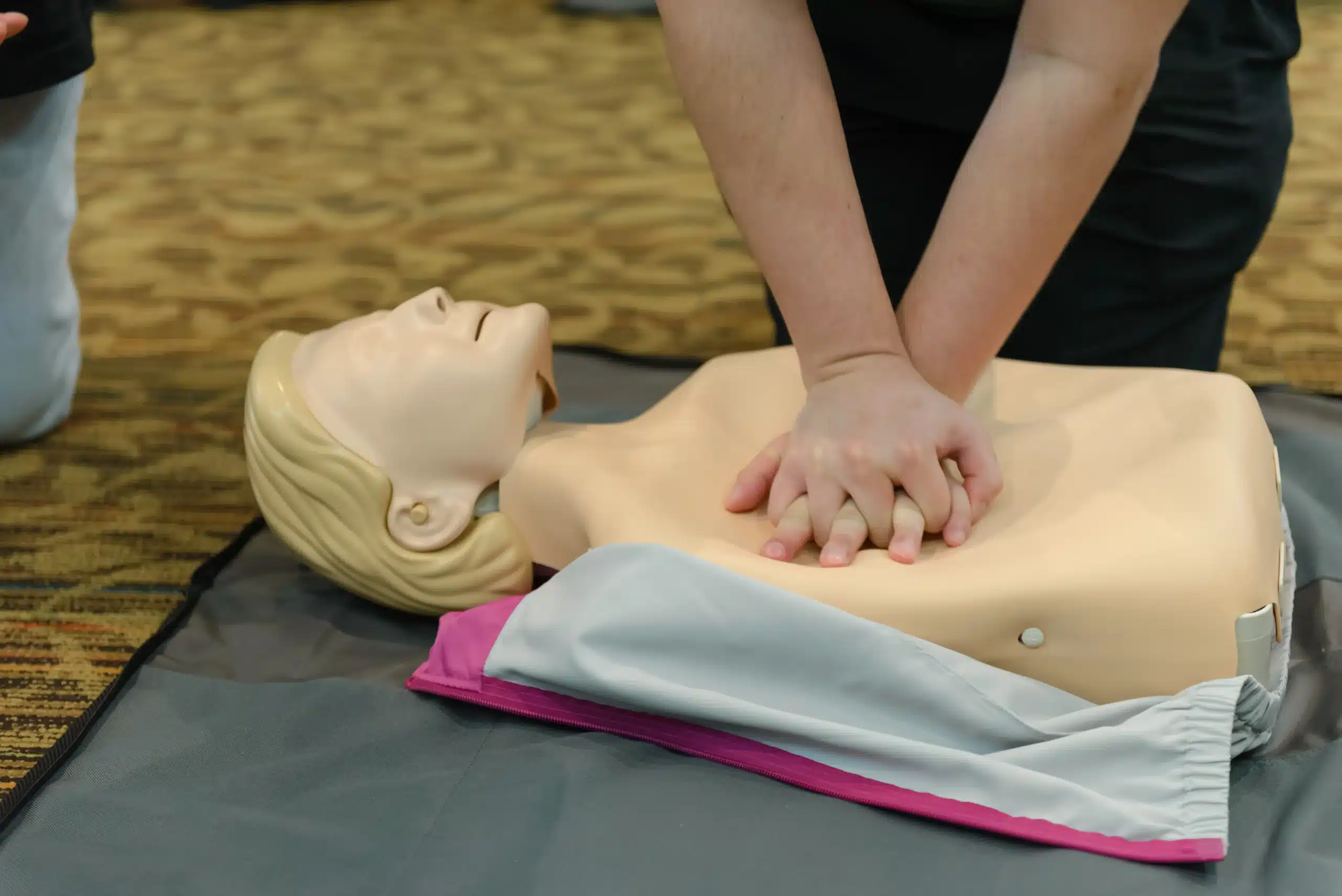The crashing waves and bustling beaches of San Francisco call for highly skilled lifeguards ready to handle any situation. Beyond strong swimming abilities, CPR expertise is paramount. This guide dives deep into the world of CPR classes for lifeguards in San Francisco, providing a roadmap for obtaining and maintaining the right certifications. We’ll explore various training programs, discuss essential skills like water rescue techniques and emergency action plans, and even touch on the job market for lifeguards in the area.
Key Takeaways
- Lifeguard CPR certification is essential: It provides the skills to handle emergencies in aquatic settings. Choose a program that meets local requirements, like those offered by the American Red Cross, and consider adding BLS and First Aid training for a well-rounded skill set.
- Find the right training program: San Francisco offers various CPR and First Aid courses, including options from Safety Training Seminars and the American Red Cross. Explore different formats, like blended learning, to fit your schedule. Compare costs and look for low-price guarantees to get the best value.
- Maintain your skills: CPR certifications expire, so recertification is crucial. Continuing education helps keep your knowledge fresh. Regularly practicing your skills ensures you’re prepared for any aquatic emergency.
What is CPR Certification for Lifeguards in San Francisco?
Lifeguard CPR certification focuses on the skills necessary to respond to emergencies in aquatic environments. While all lifeguards need
Why Lifeguards Need CPR Certification
Lifeguarding is about more than just watching swimmers. It requires constant vigilance and the ability to react quickly and effectively to a range of hazards, from near-drowning incidents and spinal injuries to sudden illnesses like heatstroke. Lifeguards are often the first responders in these situations, making their training in CPR, First Aid, and AED use absolutely critical. CPR certification equips lifeguards with the knowledge and skills to assess victims, perform rescue breathing, provide chest compressions, and use an AED, potentially saving lives.
San Francisco Requirements
In San Francisco, the American Red Cross offers comprehensive lifeguard training and certification courses that meet local requirements. Participants must be at least 15 years old and pass a pre-course swimming skills test. These courses cover various topics, including lifeguarding responsibilities, facility safety, surveillance techniques, injury prevention, emergency action plans, water rescue skills, victim assessment, breathing and cardiac emergencies, and first aid. Lifeguard certification programs like the one offered by the Red Cross often bundle CPR, First Aid, and AED training together, ensuring lifeguards have a well-rounded skill set to handle various emergencies.
CPR and First Aid Courses for Lifeguards
Lifeguards play a vital role in keeping swimmers safe, responding to everything from minor first aid incidents to life-threatening emergencies. This demands a high level of preparedness, particularly in CPR, AED use, and first aid. Let’s explore some key certifications and training options available to lifeguards.
American Red Cross Lifeguarding CPR/AED
The American Red Cross offers a comprehensive Lifeguarding course that integrates CPR/AED training tailored to the specific needs of lifeguards. This program covers a wide range of skills, from recognizing and responding to aquatic emergencies to administering first aid until paramedics arrive. The Red Cross offers both in-person classes and a blended learning option that combines online modules with hands-on practice, providing flexibility for busy schedules.
BLS for Healthcare Providers
While the American Red Cross Lifeguarding course provides a solid foundation, lifeguards can further enhance their skills with a Basic Life Support (BLS) certification for Healthcare Providers. BLS certification provides more in-depth training on two-rescuer CPR and the use of a bag-valve mask, techniques that are especially relevant in aquatic emergencies where teamwork and advanced skills are often necessary.
First Aid for Lifeguards
Beyond CPR and AED training, a strong understanding of first aid principles is essential for any lifeguard. Minor injuries like cuts, sprains, and other common ailments frequently occur in aquatic settings. The American Red Cross offers first aid courses covering a broad spectrum of injuries and illnesses, equipping lifeguards to provide immediate care and prevent further complications. When selecting a first aid course, look for one that encompasses both adult and pediatric first aid, reflecting the diverse age range lifeguards typically encounter.
Find CPR Classes in San Francisco
Finding the right CPR class can feel overwhelming with so many options. Here are a few places to start your search in San Francisco:
Safety Training Seminars
Safety Training Seminars offers a range of American Heart Association certification courses in San Francisco. We cover everything from basic CPR and First Aid to advanced certifications like ACLS and PALS. Our courses meet the needs of healthcare providers, lifeguards, and anyone who needs CPR certification. With our low price guarantee, you can be confident you’re getting the best value. We also offer the RQI program for healthcare professionals who need to refresh their resuscitation skills. Serving San Francisco, Daly City, San Mateo, and Oakland, we have a location that’s convenient for you.
American Red Cross
The American Red Cross is another excellent resource for CPR and lifeguard training. They offer various programs, including lifeguard training and certification, with flexible options like blended learning that combines online coursework with in-person skills sessions. This format is a great option for busy schedules. While there isn’t one single “best” CPR certification for lifeguards, choosing a program that aligns with your specific needs and employer requirements is essential, as discussed in Code One CPR Training’s article on lifeguard CPR requirements.
Other Local Training Centers
Beyond established organizations like Safety Training Seminars and the American Red Cross, consider exploring local options. San Francisco State University, for example, offers various American Red Cross safety training and certifications, including lifeguard training, through its Campus Recreation department. Checking with community centers, hospitals, and other local organizations can uncover additional training opportunities.
CPR Class Length and Format
Lifeguard CPR training blends classroom learning with hands-on practice, and the format you choose affects how much time you’ll spend in each. Let’s break down the typical class structures:
In-Person Training
In-person CPR classes offer a focused learning environment with immediate feedback from instructors. These courses typically run for a full day, roughly six to eight hours, depending on the certifying organization and the specific skills covered. This format works well for people who learn best through direct interaction and prefer a structured, face-to-face setting. Safety Training Seminars offers in-person CPR training throughout Northern California.
Blended Learning
Blended learning combines online modules with in-person skills sessions. This approach offers flexibility, allowing you to complete the cognitive portion of the course at your own pace online, usually in about two to three hours. You’ll then attend a shorter in-person session, typically three to four hours, to practice your skills and complete a skills assessment. This format is ideal for those with busy schedules or who prefer to review materials independently before demonstrating their skills. Check with your chosen training provider, like the American Red Cross, to see if they offer blended learning for lifeguard CPR certification.
CPR Class Costs
CPR class costs in San Francisco, Daly City, San Mateo, and Oakland can differ based on a few factors. The type of class you need (adult, child/infant, or a comprehensive course) plays a big role, as does the format. Online CPR classes are generally more affordable than in-person training, but they might not satisfy all workplace requirements. Some providers offer blended learning, combining online coursework with hands-on practice. Finally, the certification level (like BLS for Healthcare Providers versus general CPR/AED) will also influence the cost.
Factors Affecting Price
It’s smart to compare prices from different CPR training providers in your area. However, the cheapest option isn’t always the best. Look for reputable providers offering certifications accepted by your workplace or regulatory bodies. For example, healthcare professionals likely need an American Heart Association certification, like those offered by Safety Training Seminars. You can explore their BLS, ACLS, and PALS courses. For a more flexible option, consider RQI programs. Remember that prices can change, so check with the training center for current information.
Safety Training Seminars’ Low Price Guarantee
Safety Training Seminars offers high-quality training at competitive rates, including a low-price guarantee. They promise to match or beat any lower advertised price for comparable courses, making them a solid choice for CPR certification in San Francisco and surrounding areas. Review their low-price guarantee details for more information.
Key Lifeguard CPR Skills
Lifeguarding demands more than just strong swimming skills. It requires specialized training to handle a range of emergencies. Here’s a closer look at some essential CPR skills for lifeguards:
Water Rescue Techniques
Effective water rescue techniques are fundamental for lifeguards. From recognizing a swimmer in distress to executing a safe rescue, these skills are crucial for minimizing harm and ensuring a positive outcome. Training programs, like those offered by the American Red Cross, equip lifeguards with the knowledge and practice to handle various aquatic emergencies, including helping panicked swimmers and retrieving unconscious individuals from the water. This training emphasizes safe entry and exit techniques, proper approaches to victims, and effective methods for bringing them to safety.
Emergency Action Plans (EAPs)
Every second counts in an emergency. Lifeguards must be prepared to act swiftly and decisively. Emergency action plans (EAPs) provide a structured framework for responding to various scenarios, ensuring a coordinated and efficient response. These plans outline specific procedures for different emergencies, from minor injuries to major cardiac events. Understanding and practicing EAPs is vital for minimizing response times and maximizing the chances of a successful outcome. Clear communication, designated roles, and established protocols are key components of effective EAPs.
AED Training for Aquatic Environments
Automated external defibrillators (AEDs) are life-saving devices that can restore a normal heart rhythm in cases of sudden cardiac arrest. AED training is an essential component of lifeguard certification, equipping lifeguards with the skills to operate these devices quickly and correctly in aquatic settings. This training covers recognizing the signs of cardiac arrest, safely retrieving and using an AED in a wet environment, and integrating AED use into the overall emergency response plan. Lifeguards learn to assess the situation, deliver appropriate shocks, and provide post-shock care until EMS personnel arrive.
Maintain Your CPR Certification
Keeping your CPR skills sharp is essential for any lifeguard. This section covers how to stay current with your certifications.
Renewal Requirements
CPR certifications expire, typically every two years. You’ll need to take a recertification course to stay current. The American Red Cross offers recertification courses even if your current certification is still valid, giving you flexibility in scheduling. Check with your certifying organization for specific renewal timelines. At Safety Training Seminars, we offer convenient renewal courses to help you maintain your certification.
Continuing Education
Staying informed about the latest techniques is crucial, even between renewals. Continuing education courses offer valuable refreshers. Many lifeguard certifications include First Aid training. However, it’s important to confirm whether this meets all California requirements. ProTrainings recommends checking your state’s specific requirements for lifeguard CPR certification. You might need a separate First Aid certification, so verify with local regulatory bodies or employers. For example, while the Heartsaver CPR AED course may include an optional First Aid component, it might not satisfy all requirements for San Francisco lifeguards. Code One also emphasizes understanding your local requirements. Always double-check your credentials.
Prepare for Your CPR Class
Getting ready for your CPR class involves a little more than just signing up. Knowing what to expect and preparing beforehand will make your learning experience smoother and more effective. Here’s what you should know:
What to Bring
For most CPR classes, including those for lifeguards, you won’t need much. A notebook and pen are helpful for taking notes, though many courses offer printed materials. Comfortable clothing is also recommended, as you’ll be practicing skills like chest compressions and rescue breaths. If your class includes a water rescue skills component, as is common for lifeguard training, bring your swimsuit and a towel. Check with your chosen training center, like Safety Training Seminars, to confirm any specific requirements for their lifeguard CPR courses. For example, you can find more information about Safety Training Seminars’ course offerings on their website.
Physical Requirements
CPR training involves physical activity, primarily performing chest compressions and other hands-on skills. While you don’t need to be an athlete, a reasonable level of physical fitness is important. You should be able to comfortably kneel and perform repetitive movements with your arms and hands. If you have any physical limitations or concerns, it’s always a good idea to discuss them with your instructor before the class begins. They can offer modifications or guidance to ensure you can fully participate and learn the techniques effectively. For specific physical requirements for lifeguard training, including prerequisites like swimming ability, check the American Red Cross website. You can also consult your local regulations for any additional requirements.
Lifeguard Jobs in San Francisco
San Francisco offers a variety of lifeguard jobs, with opportunities at both beaches and pools, plus related positions in water safety instruction. The demand for qualified lifeguards reflects the city’s commitment to water safety and the popularity of aquatic activities. If you’re considering a career as a lifeguard, understanding the different types of roles available can help you find the perfect fit.
Beach and Pool Lifeguarding
Beach lifeguards in San Francisco have the vital responsibility of ensuring the safety of beachgoers along the city’s coastline. These positions often involve patrolling designated areas, responding to emergencies, performing rescues, and administering first aid. Open beach lifeguard positions are frequently available. Pool lifeguarding, on the other hand, focuses on the safety of swimmers in controlled environments. Pool lifeguard jobs are also in demand throughout San Francisco. Both beach and pool lifeguarding require strong swimming skills, quick reflexes, and the ability to remain calm under pressure.
Water Safety Instruction
Beyond lifeguarding itself, there’s a growing need for certified water safety instructors in San Francisco. These instructors teach essential water safety skills to people of all ages, from basic swimming techniques to advanced rescue procedures. Many lifeguard positions also involve some element of water safety instruction, making certifications in CPR and first aid highly valuable. By educating the community about water safety, these instructors play a crucial role in preventing accidents and promoting safe enjoyment of aquatic environments.
Related Articles
- CPR Certification in SF: Your Complete Guide – San Francisco CPR Classes
- First Aid in San Francisco: Your Guide to Training & Certification – San Francisco CPR Classes
- American Red Cross SF: A Guide to Services & Volunteering – San Francisco CPR Classes
- BLS Certification in San Francisco: Your 2023 Guide – San Francisco CPR Classes
- BLS for Healthcare Providers in San Francisco – San Francisco CPR Classes
Frequently Asked Questions
What’s the difference between CPR/AED for lifeguards and BLS for Healthcare Providers?
CPR/AED training for lifeguards focuses specifically on aquatic emergencies, while BLS for Healthcare Providers covers a broader range of medical situations and goes deeper into techniques like two-rescuer CPR and bag-valve mask use. Lifeguards often benefit from having both certifications.
How long does it take to get lifeguard CPR certified?
In-person lifeguard CPR classes typically last six to eight hours. Blended learning options, combining online coursework with shorter in-person skills sessions, can reduce the in-person time to three or four hours.
Where can I find lifeguard CPR classes in San Francisco?
Several organizations offer lifeguard CPR training in San Francisco, including Safety Training Seminars, the American Red Cross, and various local training centers like those found at some universities or community colleges. Check their websites or contact them directly to find a course that fits your schedule and needs.
How much do lifeguard CPR classes cost?
The cost varies depending on the provider, the type of certification, and the course format (in-person, blended, or online). It’s wise to compare prices and check for any low-price guarantees, like the one offered by Safety Training Seminars.
How often do I need to renew my lifeguard CPR certification?
Most CPR certifications, including those for lifeguards, are valid for two years. Check with your certifying organization for their specific renewal requirements and look for recertification courses offered by providers like the American Red Cross or Safety Training Seminars.


